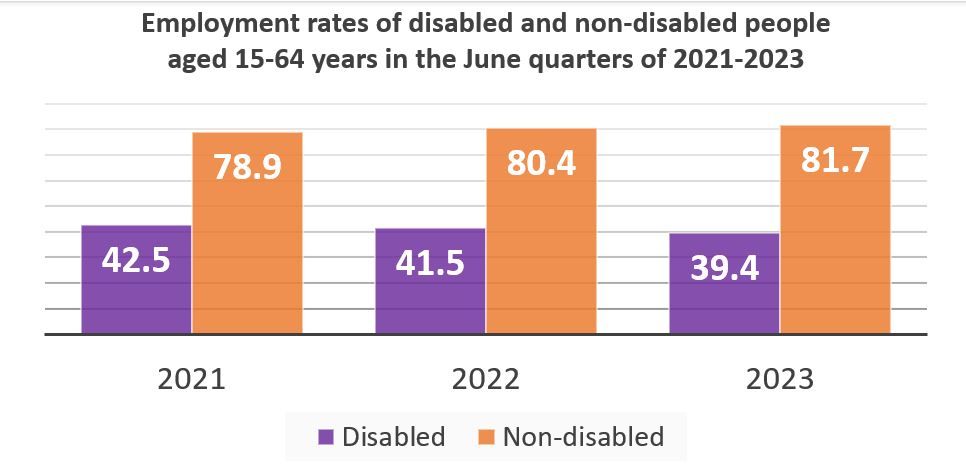The widening of the employment gap for disabled people is hugely concerning and shows an urgent need to address the barriers to employment for disabled people, the Disabled Persons Assembly (DPA) NZ says.
Labour market statistics on disability released today show that the employment gap has widened for the last three years in a row.
“For a country that supposedly cares about addressing employment inequalities, it is shocking that we have an employment rate for disabled people that is dropping, while the employment rate for the general population is climbing,” DPA National President Joanne Dacombe says. “We are going backwards.”
“Every New Zealander has the right to gain and maintain employment.
“However, working age disabled people now have less than half the employment rate of non-disabled people.”
In the June 2023 quarter, only 39.4 percent of disabled people aged 15–64 years were employed, compared with 81.7 percent of non-disabled. Since the June 2021 and June 2022 quarters, the number of disabled people in employment has consistently dropped while the number of non-disabled people in employment has consistently risen.
“Despite increased opportunity for flexible work arrangements since COVID-19, which are supposed to benefit disabled people, the employment gap between disabled and non-disabled working-age people continues to widen,” Ms Dacombe says.
The gap has grown from 36.4 percent in 2021 to 38.9 in 2022, and now further to today’s announcement of 42.3.
“This shows a need with critical urgency to look deeper into what factors are driving these increasingly poorer outcomes.”
“It is often systemic barriers that prevent disabled people from employment, including the difficulty in accessing and maintaining equitable support.”
In April 2023, a report released by DPA on disabled people’s experiences of accessing Job and Training Support Funds demonstrated that funding is greatly appreciated by those who are able to access it and that many disabled people attribute it to their continued involvement in the labour workforce. However, it can be difficult to access, difficult to maintain, and inequitable, all of which impacts on employment outcomes.
“While there is a slight drop in median weekly income gap, disabled people still earn far less than non-disabled people, despite often having a higher cost of living.
“What we see from this data is that disabled people are not being prioritised in wellbeing initiatives. To improve equity in the employment of disabled people, it is imperative that we are part of the co-design and implementation of any disability policy and initiatives.
“DPA will continue to advocate on behalf of disabled people to improve our equitable outcomes in employment through highlighting these issues in policy submissions and educating employers on inclusive recruitment practices.”

The bar graph shows employment rates of disabled and non-disabled people aged 15-64 years in the June quarters of 2021-2023. In 2021, 42.5% disabled and 78.9% non-disabled were employed. In 2022, 41.5% disabled and 80.4% non-disabled were employed. In 2023, 39.4% disabled and 81.7% non-disabled were employed.
